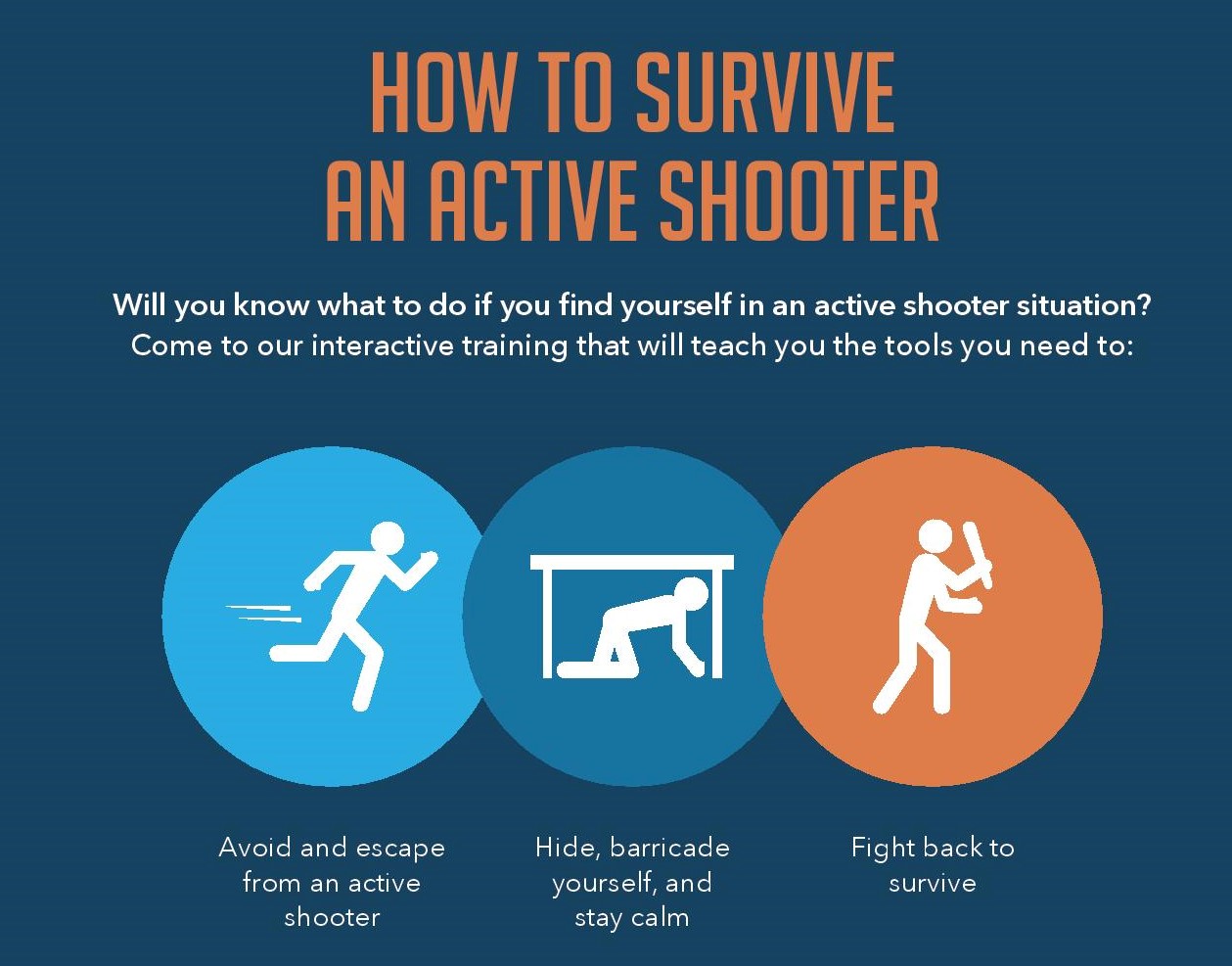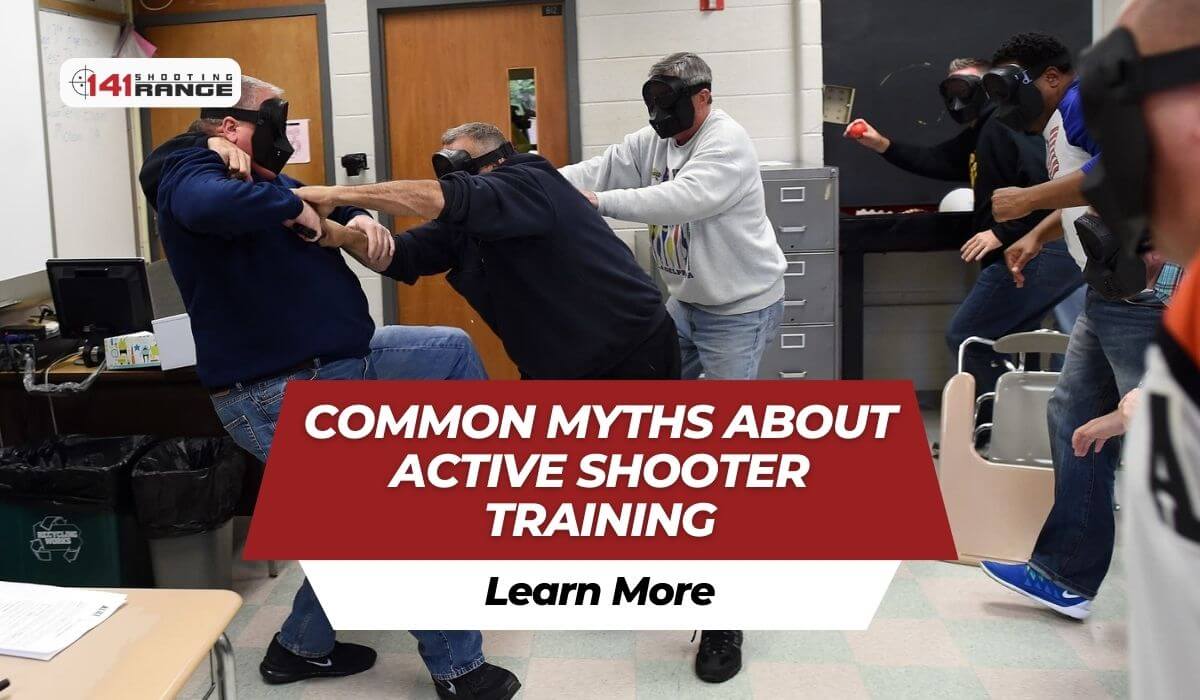What You Need to Learn About Effective Active Shooter Training
What You Need to Learn About Effective Active Shooter Training
Blog Article
Discovering the Secret Components and Purposes of Reliable Active Shooter Training Programs
Energetic shooter training programs are crucial in equipping people and organizations with the required abilities to react successfully to prospective hazards. These programs incorporate crucial parts, such as the "Run, Hide, Fight" approach, practical scenario simulations, and communication methods, promoting a setting of readiness. Furthermore, they emphasize psychological resilience to assist individuals browse high-stress circumstances. As we discover the ins and outs of these training programs, it comes to be evident that comprehending their comprehensive nature is vital to improving safety measures and action abilities. What particular aspects really specify their effectiveness?
Relevance of Energetic Shooter Training
Energetic shooter training programs are vital for improving preparedness and reaction despite prospective hazards. These programs intend to equip individuals, organizations, and communities with the knowledge and skills essential to successfully react to active shooter situations. The increasing frequency and seriousness of such occurrences underscore the importance of aggressive measures, as prompt and educated responses can significantly mitigate harm.

Furthermore, these programs can aid ease the anxiousness and concern that often accompany discussions about prospective threats. By providing structured guidance and useful strategies, people obtain confidence in their capability to react properly. Ultimately, the relevance of active shooter training hinges on its prospective to conserve lives, lower injuries, and grow a prepared and durable community efficient in dealing with unanticipated challenges.
Key Components of Training Programs
Reliable energetic shooter training programs commonly integrate several crucial elements made to prepare participants for real-world scenarios. The first part is comprehensive education and learning on the nature of energetic shooter events, consisting of stats, case research studies, and mental variables that influence aggressors. This academic foundation is vital for promoting recognition and understanding amongst individuals.
Following, programs often consist of training on individual precaution, emphasizing the "Run, Hide, Fight" technique. Individuals discover exactly how to analyze their atmosphere, make fast decisions, and take appropriate activities throughout a situation. Furthermore, the addition of efficient communication abilities is vital, as individuals have to recognize just how to report incidents and share important info with police.
One more vital part is the involvement of legislation enforcement or safety experts, that provide understandings into tactical feedbacks and the significance of cooperation throughout a crisis. Additionally, programs should attend to the psychological after-effects of an active shooter situation, using strategies for coping and recuperation.
Last but not least, continuous training and refresher courses are essential to make sure that expertise continues to be present and participants really feel positive in their abilities. With each other, these essential components produce a well-shaped training program that equips people to react efficiently to an energetic shooter event.
Realistic Circumstance Simulations
Reasonable scenario simulations are a critical aspect of active shooter training programs, supplying individuals with the opportunity to participate in hands-on technique that mirrors prospective real-life situations. These simulations boost the training experience by producing an immersive environment where individuals can use academic knowledge in useful setups.
With using role-playing, simulated scenarios, and specialized training facilities, individuals experience the immediate challenges and stress factors related to an active shooter case. This approach of training advertises fast decision-making, team effort, and the application of safety protocols under pressure. It enables responders to establish critical skills such as situational recognition, hazard assessment, and efficient emptying procedures.
Furthermore, realistic simulations help to identify possible weak points in individuals' responses, making it possible for instructors to offer targeted feedback that site and improve overall readiness. The unification of differing situations, consisting of different areas and opponent accounts, even more enriches the training experience, making sure that individuals are well-equipped to deal with a variety of possible circumstances.
Ultimately, these simulations serve not only to advise yet also to build confidence amongst individuals, cultivating a sense of readiness that is crucial for efficient emergency situation action when faced with an active shooter threat. active shooter training.
Communication Techniques in Training
Clear interaction is vital in active shooter training programs, as it straight affects the performance of feedback initiatives throughout a dilemma. Training participants need to comprehend the procedures and my company treatments that will lead their activities if encountered with an active shooter situation. Developing clear lines of communication guarantees that all individuals included can relay information promptly and properly.

Moreover, training programs need to highlight the relevance of active listening - active shooter training. Participants should be educated to interpret and react to info effectively, minimizing misconceptions that might lead to harmful scenarios. Routine responses sessions post-training can likewise improve communication strategies, making certain that all participants feel encouraged to share their experiences and recommendations for renovation. Inevitably, efficient interaction techniques are crucial for preparing individuals to respond content emphatically and cohesively despite an active shooter incident.
Emotional Preparedness Strategies
Mental readiness methods are significantly acknowledged as essential parts of energetic shooter training programs. These methods intend to gear up individuals with the mental durability needed to react properly in high-stress situations. By fostering a mindset in harmony with possible threats, individuals can better handle worry, stress and anxiety, and confusion during critical events.
Secret emotional readiness techniques consist of scenario-based training and stress inoculation exercises. Scenario-based training immerses individuals in reasonable simulations that mimic the disorder of an energetic shooter occasion, permitting them to exercise decision-making under pressure. This exposure helps build knowledge with emergency situation protocols, enhancing natural reactions.
Stress inoculation entails gradual direct exposure to stress-inducing scenarios, permitting individuals to develop coping devices. This can include breathing exercises, visualization strategies, and cognitive restructuring to reframe unfavorable ideas. By integrating these techniques, training programs can grow a feeling of self-confidence and control, which is important in dilemma scenarios.
Additionally, post-incident psychological assistance is important to deal with the psychological consequences of an active shooter event. Including psychological wellness sources right into training programs not only prepares individuals for immediate responses but also promotes lasting psychological health, ultimately adding to a more secure and a lot more resistant setting.
Verdict

Report this page